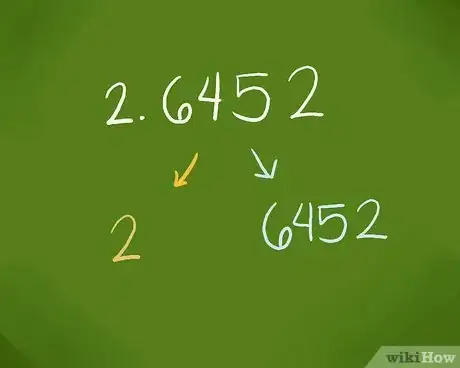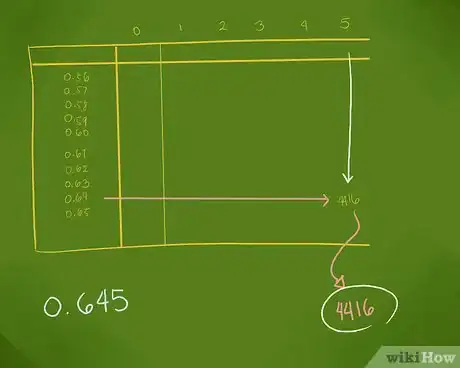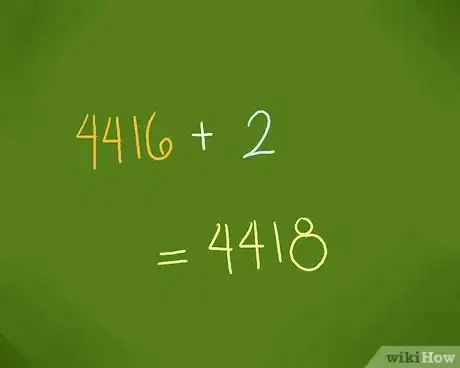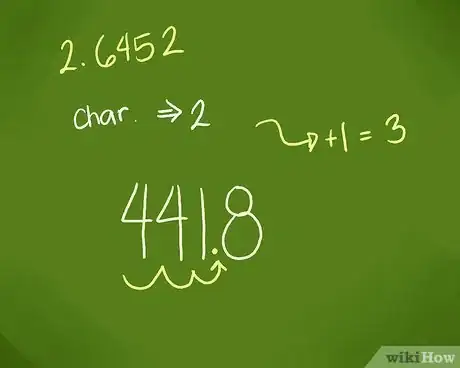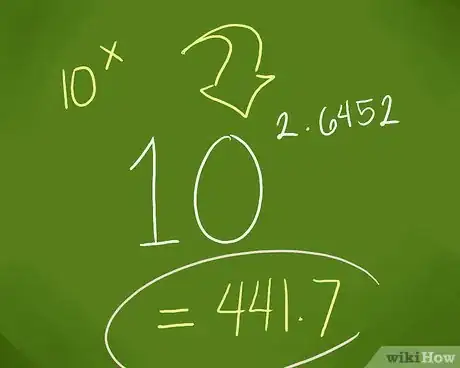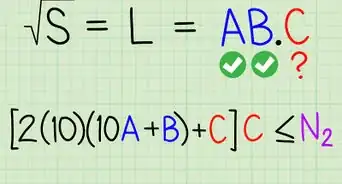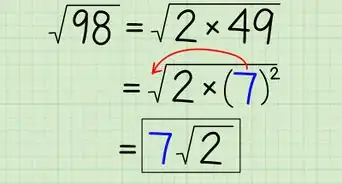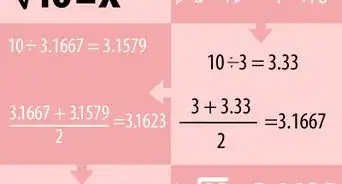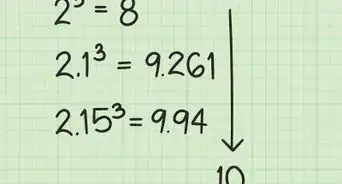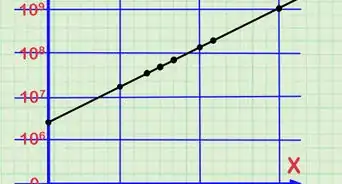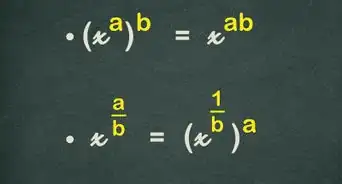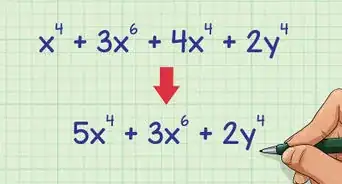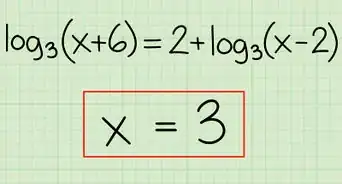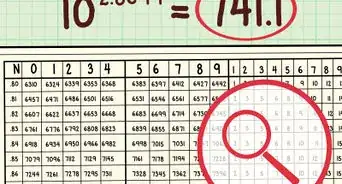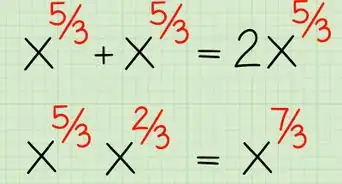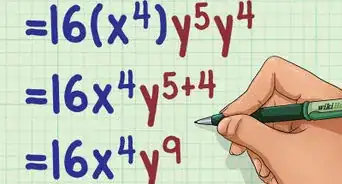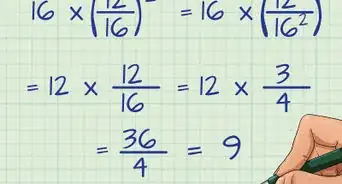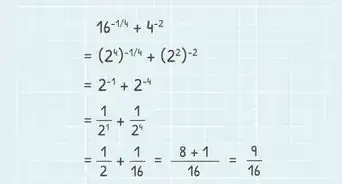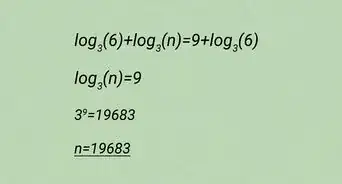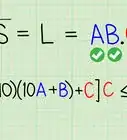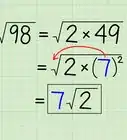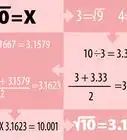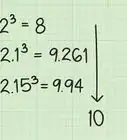wikiHow is a “wiki,” similar to Wikipedia, which means that many of our articles are co-written by multiple authors. To create this article, 15 people, some anonymous, worked to edit and improve it over time.
wikiHow marks an article as reader-approved once it receives enough positive feedback. This article has 26 testimonials from our readers, earning it our reader-approved status.
This article has been viewed 780,767 times.
Learn more...
LOG (also known as a “compression operator”) is a mathematical tool that compresses numbers. It is typically used when numbers are too large or too small to handle easily, as often happens in astronomy or integrated circuits. Once compressed, a number can be converted back to its original form using an inverse operator known as “antilog.”
Steps
Using an Antilog Table
-
1Separate the characteristic and the mantissa. Consider the number under observation. The characteristic is the part that comes before the decimal point; the mantissa is the part that comes after the decimal point. Antilog tables are arranged with respect to these parameters, so you need to separate them.[1]
- As an example, say you need to find the antilog for 2.6452. The characteristic is 2, and the mantissa is 6452.
-
2Use the antilog table to find a corresponding value for your mantissa. Antilog tables are easily available; you may have one in the back of your mathematics textbook. Open the table and look for the row number consisting of the first two digits of the mantissa. Then find the column number equal to the third digit of the mantissa.[2]
- In the example above, you would open the antilog table and find the row number beginning with .64, then the column for 5. In this case, you would find that the corresponding value is 4416.
Advertisement -
3Find the value from the mean difference columns. The antilog table also includes a set of columns known as “mean difference columns.” Look at the same row as before (the row corresponding to the first two digits of your mantissa), but this time, find the column number equal to the fourth digit of the mantissa.[3]
- In the example above, you would again use the row number beginning with .64, but find the column for 2. In this case, your value is 2.
-
4Add the values obtained in the previous steps. Once you have these values, the next step is to add them together.[4]
- In the example above, you would add 4416 and 2 to get 4418.
-
5Insert the decimal point. The decimal point always goes in a specific designated place: after the number of digits that corresponds to the characteristic plus 1.[5]
- In the example above, the characteristic is 2. You would therefore add 2 and 1 to get 3, then insert the decimal point after 3 digits. The antilog of 2.6452 is therefore 441.8.
Calculating the Antilog
-
1Consider your number and its parts. For whatever number you are observing, the characteristic is the part that comes before the decimal point; the mantissa is the part that comes after the decimal point.[6]
- As an example, say you need to find the antilog for 2.6452. The characteristic is 2, and the mantissa is 6452.
-
2Know the base. The mathematical log operator has a parameter known as the base. For numerical computations, the base is always 10. Know, therefore, that when you use this method for calculating an antilog, you will always use a base of 10.[7]
-
3Calculate the 10x. By definition, the antilog of any given number x is the basex. Recall that the base for your antilog is always 10; x is the number with which you are working. If the mantissa of the number is 0 (in other words, if the number under observation is a whole number, with no decimal point), the computation is easy: simply multiply 10 times 10 that number of times. If the number is not an even whole, use a computer or calculate to compute 10x.[8]
- In the example above, we do not have a whole number. The antilog is 10^2.6452, which, using a calculator, comes to 441.7.
Community Q&A
-
QuestionCan I do an antilog of a negative number?
 Community AnswerThe antilog of a number is the same as raising 10 to the power of the number. So, antilog -x =1/(10 to the power x). Therefore, you can do an antilog of a negative number.
Community AnswerThe antilog of a number is the same as raising 10 to the power of the number. So, antilog -x =1/(10 to the power x). Therefore, you can do an antilog of a negative number. -
QuestionHow can I find the antilog of 3.76?
 HarrisCommunity AnswerLog x = 3.76, where x = antilog 3.76. A characteristic of log x = 3, a mantissa of log x = .76. In the table of antilog, look for .76 in extreme left column and 0 in top row. Now look at the number at intersection of row containing .76 and column containing 0. The number is 5754. Note that the place between first nonzero digit and its next digit is called 'reference position' e.g 3^76 -- ref-position is between 3 and 7. Here reference position is between 5 and 7. The characteristic is 3, so the decimal point in 5754 will be after three digits right to the ref-position. x = 5754.
HarrisCommunity AnswerLog x = 3.76, where x = antilog 3.76. A characteristic of log x = 3, a mantissa of log x = .76. In the table of antilog, look for .76 in extreme left column and 0 in top row. Now look at the number at intersection of row containing .76 and column containing 0. The number is 5754. Note that the place between first nonzero digit and its next digit is called 'reference position' e.g 3^76 -- ref-position is between 3 and 7. Here reference position is between 5 and 7. The characteristic is 3, so the decimal point in 5754 will be after three digits right to the ref-position. x = 5754. -
QuestionWhy do you use a dot in 0.0013?
 Pineapple.comCommunity AnswerThe dot shows it is a decimal which defines its place (0.1= a tenth while 0.001= a hundredth).
Pineapple.comCommunity AnswerThe dot shows it is a decimal which defines its place (0.1= a tenth while 0.001= a hundredth).
References
- ↑ https://www.cuemath.com/algebra/antilog-table/
- ↑ https://www.cuemath.com/algebra/antilog-table/
- ↑ https://www.cuemath.com/algebra/antilog-table/
- ↑ https://www.cuemath.com/algebra/antilog-table/
- ↑ https://www.cuemath.com/algebra/antilog-table/
- ↑ https://www.omnicalculator.com/math/antilog
- ↑ https://www.rapidtables.com/calc/math/anti-log-calculator.html
- ↑ https://www.calculators.org/math/log-antilog.php
About This Article
To calculate antilog, plug the number you want to find the antilog for into 10 to the x power, where x is equal to the number you're working with. For example, if the antilog is 10^2.6452 use a calculator to find the answer, which is 441.7. In this example, the number isn’t an even whole, so using a calculator to compute the answer is essential. To learn how to do antilog using an antilog table, keep reading!
